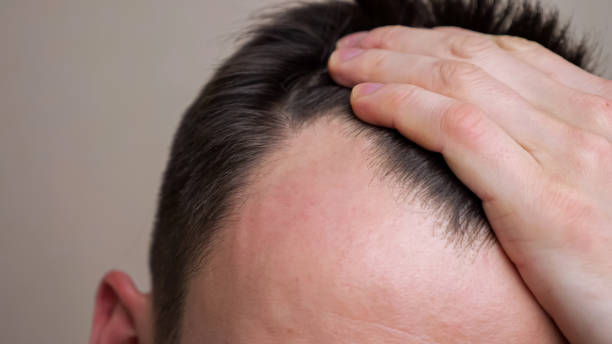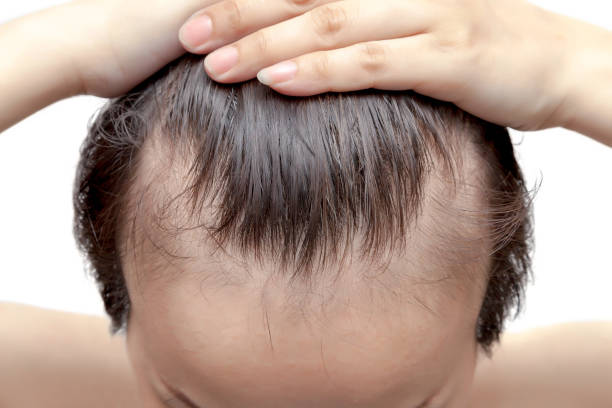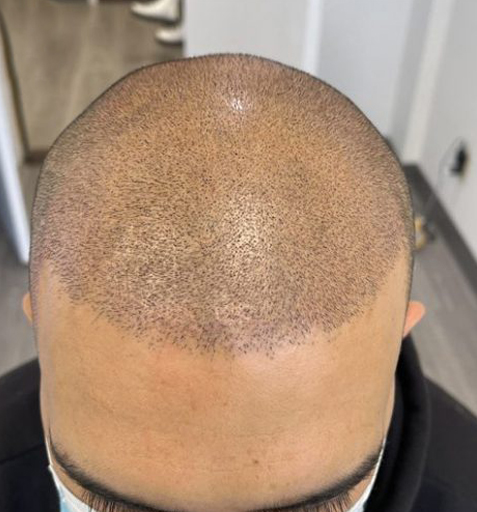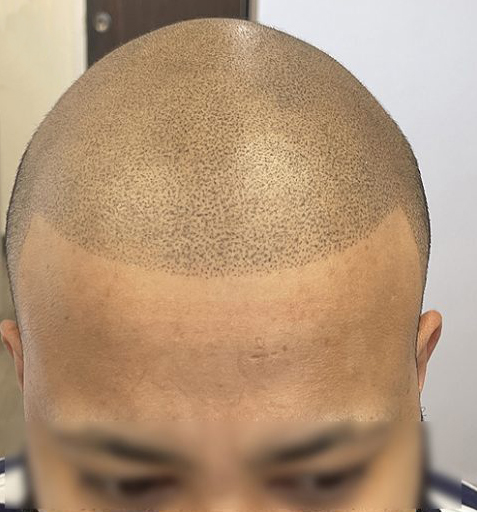
Table of Contents
A receding hairline is one of the most common signs of hair loss for men and can occur at any age. As the hairline gradually moves backward, it can impact confidence and self-esteem. While many men may experience it as part of the natural aging process, others might find it troubling, especially if it starts at a young age. Understanding the causes of a receding hairline and the options available can help men feel more in control of their appearance.
This post will examine the underlying reasons for a receding hairline, its emotional effects, and how scalp micropigmentation can offer a promising solution.
Table of Contents
A receding hairline refers to the gradual thinning or loss of hair along the forehead, causing the hairline to shift back over time. It is a common early sign of male pattern baldness, usually starting at the temples and gradually moving inward. In some cases, this leads to the formation of a widow’s peak, which creates a V-shaped appearance in the middle of the forehead.
Receding hairline is typically caused by a combination of factors, with genetics being a major contributor.
The hormone testosterone and its metabolite, dihydrotestosterone (DHT), can shrink hair follicles, resulting in progressive hair loss in certain areas of the scalp.

For many men, a receding hairline can profoundly affect self-esteem. Hair is often seen as a symbol of youth and vitality, so it can make men feel older or less attractive when it starts to recede. It can also result in self-doubt, especially if the hair loss occurs early in life.
However, it’s important to understand that a receding hairline doesn’t define who you are. With the right mindset, embracing hair loss can become empowering. Various solutions can help restore confidence and make men feel good about their appearance again.
There are several ways to address a receding hairline, from lifestyle changes to medical treatments and noninvasive solutions. Below are some of the most effective options available:
A hair transplant involves relocating healthy hair follicles from regions of the scalp where hair growth is still active and transplanting them to thinning or bald spots. This solution is effective for those with significant hair loss and can produce a permanent, natural-looking result.
Minoxidil is a treatment for the scalp, applied topically
to promote hair growth. It is one of the most widely used over-the-counter medications. It works by stimulating hair follicles to encourage regrowth. It may take several months to notice visible results, and it works best for those with early stages of hair loss.
Finasteride is a prescription drug that prevents testosterone from converting to DHT. DHT causes hair follicles to diminish in size. And blocking its production can help slow hair loss and encourage hair regrowth in certain individuals.
For those who want a noninvasive solution to their receding hairline, scalp micropigmentation (SMP) offers a fantastic alternative. This technique involves applying organic pigments to the scalp to replicate the look of short, shaved hair follicles. SMP creates the illusion of thicker, fuller hair and can significantly improve the appearance of thinning or balding areas.
Unlike hair transplants, scalp micropigmentation requires no surgical procedures or lengthy recovery times. It is a safe, effective, and low-maintenance option for men who want to improve their hairline and overall appearance.
Wigs and hairpieces are always an option for men looking for a temporary solution. Modern wigs are lightweight, breathable, and designed to look as natural as possible. They can be a good way to cover up hair loss while waiting for other treatments to take effect.
Along with these treatments, keeping a healthy scalp and lifestyle is crucial for managing a receding hairline. Here are a few tips for enhancing scalp health and minimizing further hair loss:
Eat a Healthy Diet: Incorporate foods packed with Nutrients like zinc, biotin, and iron to promote healthy hair growth.
Keeping a balanced diet is crucial for overall health and can support your efforts to prevent further hair loss.
A receding hairline is a common issue, but it doesn’t have to be a source of embarrassment or frustration. You can manage the effects of hair loss and regain confidence with the right treatment, whether it’s a hair transplant, scalp micropigmentation, or lifestyle changes.
If you’re seeking a noninvasive and permanent solution, scalp micropigmentation is an excellent option to create the look of thicker, fuller hair and restore your hairline. With the right treatment and care, you can embrace the changes and feel confident again in your appearance.






© 2024 HAIRTATTOO.CA | Scalp Micropigmentation & Trichology Centre
